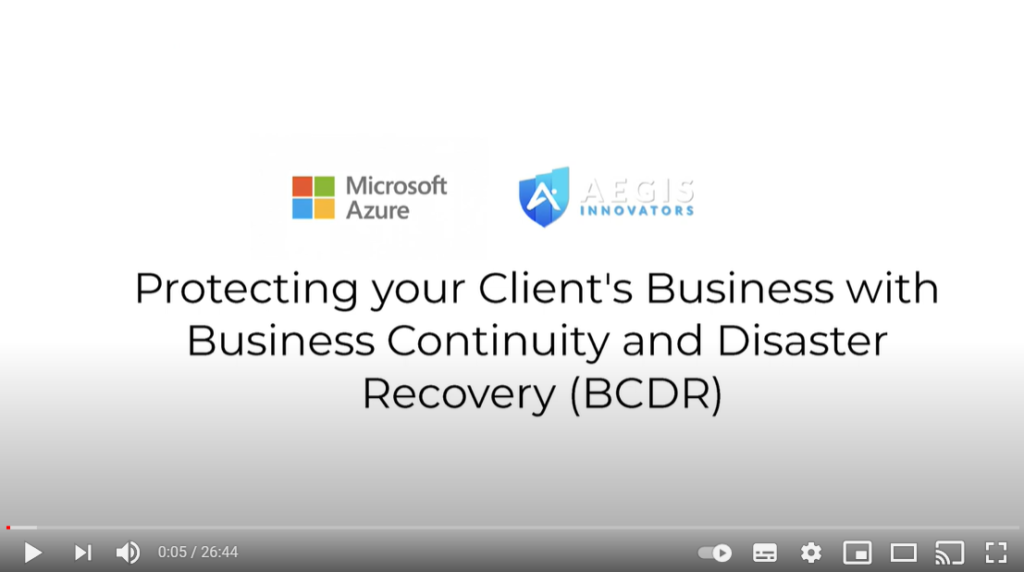Backup and disaster recovery are peculiar things. They’re services we all hope we’ll never need to use. As an unfortunate result, end clients often ask themselves the question: why even bother in the first place? What are the chances, anyway?
It turns out the odds are far worse than it might seem at a first glance. Last year, a full third of all companies suffered some kind of data loss. Would you board a plane that has a 33% chance of never making it to its destination?
It’s important to frame that conversation with clients correctly. In doing so, Microsoft Azure can be an ace up your sleeve. But first, laying the foundation for why backup and disaster recovery is crucial.
Looking for an expert cloud provider to help your business grow? Check out our Partner Guide
Backup and disaster recovery has entered the chat
Show you care
Caring is ultimately is what backup and disaster recovery solutions are all about. You’re protecting something valuable that’s worth caring about: your client’s business.
Different companies have different priorities. A software development firm will want to protect the code they’re developing against loss or theft. A retail company will need to have data in multiple locations and a central management console. What kind of backup strategy does this entail? Lay the groundwork with the client.
Use realistic examples
Once you understand your client’s vulnerabilities and weaknesses, it’s time to present some scenarios. They doesn’t need to be worst-case, either. Wars, earthquakes, hurricanes and total data losses are dramatic, sure, but a smaller hiccup can be bad enough. What if the basement where physical backups are stored floods, or accounting data is accidentally wiped out one day? These are situations are more likely to happen in real life. In fact, they happen all the time.
Calculate the cost of negligence
If you think backup and disaster recovery is expensive, imagine what it will cost you not to have it in place. That’s the basic idea, and the good news is that these add-ons aren’t pricey at all, especially compared to the total cost of ownership of what you’re safeguarding.
Let’s take average servers as an example. They have a life cycle of five to six years, and it doesn’t stop at the purchase price. There’s regular and unscheduled maintenance, utility consumption, rent for the premises they’re stored at, etc. Adding a few bucks more for backup won’t really make a difference in the grand scheme of things, especially if it constitutes insurance against unforeseen circumstances that can paralyze your business, making all those previously accrued costs utterly pointless.
Determine a budget
Budget is always an issue, particularly for smaller companies. But two-thirds of all cyberattacks target SMBs, mainly because criminals know small firms don’t have the capacity to respond adequately.
Sometimes, you must lead the horse to water. The threats are real and business owners need to be proactive rather than reactive. Perhaps a security seminar is something you could offer your clients to advance their education? Backup and disaster recovery form an integral part of this topic. For instance, clients tend to assume that everything in the cloud is replicated somewhere else by default, which is not the case and can lead to some nasty surprises. It’s up to you, as the IT expert, to rectify this misconception and show why investments are necessary. (If you don’t quite know how to go about it, Sherweb can help!)

How Microsoft Azure can help
Microsoft Azure can help with many of these pain points. Let’s break it down:
- Same as with all Microsoft products, security is built in by design. You get multi-factor authentication (MFA), file control (where you restrict access to files to only one domain or one geo-location), and other key features ready to be enabled at the flick of a virtual switch. No need to add them later at a higher cost and face potential issues with compatibility!
- The value is unbeatable. You won’t get a better performance at the same price point, and you can scale easily—back up only what clients need (whether that’s 1 or 20 recovery points), for as long as they need it (whether that’s 2 weeks or 99 years). Reluctant clients are always happy to hear backup and disaster recovery won’t cost them an arm and a leg.
- One centralized location to manage all backup and recovery efforts from.
To get a full lowdown on leveraging Microsoft Azure for backup and DR, check out this conversation with one of our partners. They talk about their tried-and-tested methods in more detail.

Excited to get started with Microsoft Azure, but still feel like you could use some guidance? We offer a ton of resources and education opportunities to guide you. We strive to act as an extension of your team and fill any skill gaps you might be facing internally, whether they’re technical or sales-related. Our subject matter experts are always just a call or chat away. Contact us to learn more, or join our partner network to start your cloud journey with Sherweb.
